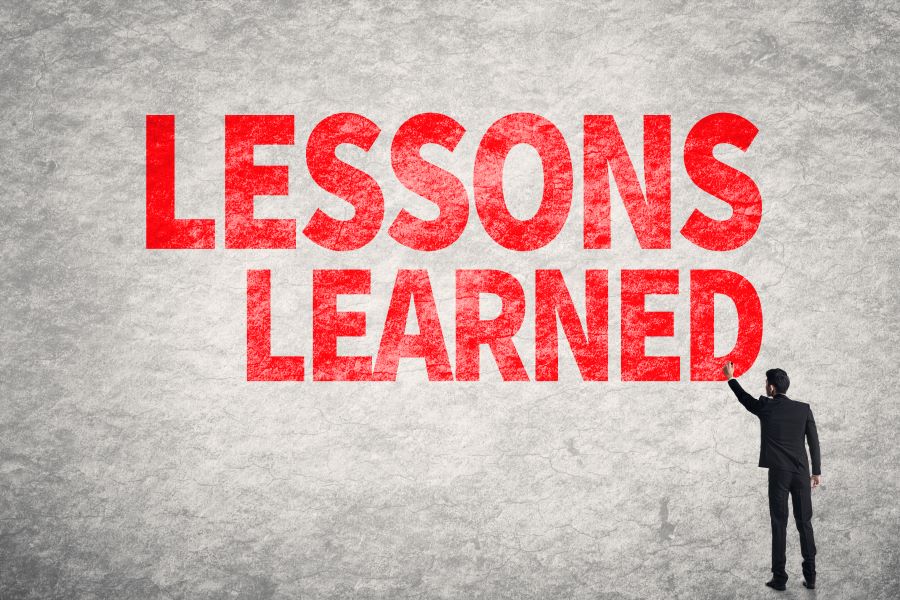Lessons Learned From Successful Review Removal Cases
Have you ever received a negative or fake review that has affected your business? Worry no more; we have studied numerous successful review removal cases and are ready to share the valuable lessons gleaned from these experiences. The insights gathered from various business owners and industry experts will help you navigate the process of addressing and removing unfavorable or false reviews with confidence.
Lessons learned from successful review removal cases:
Successful review removal cases offer lessons such as understanding the platform’s guidelines, responding professionally and empathetically to the review, providing detailed evidence for review violation, being persistent and patient in following up, and encouraging positive reviews to mitigate the impact of negative ones.

Curious about the secrets behind successful review removal cases? Discover the valuable lessons we’ve learned from various victorious scenarios and gain insights that could save your brand’s reputation. Don’t miss out on this priceless knowledge read on!
Contents
- 1 Insights Gained from Successful Review Deletion Cases
- 1.1 • The Importance of Review Removal
- 1.2 • Understanding the Review Platforms’ Guidelines
- 1.3 Lesson 1: Know the Platform’s Guidelines
- 1.4 Lesson 2: Respond Professionally and Empathetically
- 1.5 Lesson 3: Provide Detailed Evidence for Review Violation
- 1.6 Lesson 4: Be Persistent and Patient
- 1.7 Lesson 5: Encourage Positive Reviews
- 1.8 • Conclusion
- 2 Exploring the Review Process for Lessons Learned
- 3 Notable Examples of Lessons Learned Instances
- 4 Top Practices and Valuable Lessons Learned
- 5 Key Lessons Learned in Project Management Scenarios
Insights Gained from Successful Review Deletion Cases
• The Importance of Review Removal
Online reviews play a significant role in shaping consumer opinions and influencing their buying decisions. Negative reviews can severely harm a business’s reputation, driving potential customers away and negatively impacting overall sales.
As such, businesses must be proactive in managing their online reviews, including seeking the removal of undeserving negative reviews.
• Understanding the Review Platforms’ Guidelines
Before attempting to remove a negative review, it is essential to understand the guidelines and policies of the review platform where it is published. Each platform, such as Google My Business, Yelp, or TripAdvisor, has specific guidelines outlining the types of content that are considered inappropriate and can be removed.
Familiarizing oneself with these guidelines can greatly improve the chances of successful review removal.
Lesson 1: Know the Platform’s Guidelines
Study the platform’s content guidelines and identify any violations in the negative review. Common violations may include profanity, spam, promoting illegal activities, or revealing personal information.
– Responding to the Review
While it may be tempting to ignore negative reviews, promptly responding to them is crucial in showcasing your business’s commitment to customer satisfaction. A well-thought-out response can sometimes even lead to the reviewer reconsidering their negative experience and subsequently updating or deleting their original review.
Lesson 2: Respond Professionally and Empathetically
Acknowledge the reviewer’s concerns, apologize if necessary, and offer a solution or explain the steps taken to address the issue. Be polite and professional in your response, as a combative tone may further harm your reputation.
– Reporting the Review for Removal
Once you have identified a review that violates the platform’s guidelines, you can report it for removal. Be sure to provide clear and concise evidence to support your claim, as a well-founded request is more likely to be successful.
Lesson 3: Provide Detailed Evidence for Review Violation
Outline the specific section(s) of the review that violate the platform’s guidelines and present any applicable evidence, such as screenshots or documents, to support your claim.
– Follow Up On Your Removal Request
Depending on the platform, the review removal process can take anywhere from a few days to several weeks. During this time, it is imperative to follow up on your request to ensure it is being addressed appropriately.
Lesson 4: Be Persistent and Patient
If you have not received an update on your removal request within the platform’s estimated response time, contact their customer support to inquire about the status of your request. Be patient and persistent in your follow-up, as multiple contacts may be necessary to achieve a successful outcome.
– Handling Reviews That Cannot Be Removed
Unfortunately, not all undeserving negative reviews will be eligible for removal. In these cases, your best course of action is to encourage satisfied customers to leave positive reviews, thereby diluting the impact of the negative review.
Lesson 5: Encourage Positive Reviews
Ask satisfied customers to share their experiences on the same review platform where undeserving negative reviews are published. A higher number of genuine positive reviews can help overshadow one or two negative reviews.
• Conclusion
Successfully removing undeserving negative reviews requires familiarity with the platform’s guidelines, a professional and empathetic response to the review, detailed evidence supporting the removal request, persistence in following up, and encouraging positive reviews to offset the negative ones.
By following these lessons learned from successful review removal cases, businesses can better manage their online reputation and mitigate the impact of negative reviews on their overall success.
Exploring the Review Process for Lessons Learned
In the world of project management and business operations, the Lessons Learned Review Process is a critical component in identifying areas for improvement and ensuring organizational success.
By effectively reviewing and analyzing past experiences, teams, and organizations can better adapt their strategies and processes to drive more productive outcomes in the future.
• Benefits of the Lessons Learned Review Process
– Enhancing Knowledge Sharing and Collaboration
The Lessons Learned Review Process provides an excellent platform for sharing experiences and ideas among team members, promoting collaboration and learning across the organization.
By fostering an environment that encourages the utilization of diverse skill sets and expertise, teams can better tackle complex tasks and overcome project obstacles. The Project Management Institute (PMI) underscores the importance of knowledge sharing in project management success.
– Informed Decision-Making
By systematically reviewing past projects and documenting lessons learned, project managers can better understand the factors that contributed to their successes and failures. This valuable information can then guide their decision-making in future projects, leading to more informed choices and ultimately better outcomes.
– Reducing Project Risks and Costs
When project managers are equipped with a thorough understanding of past experiences, they can identify potential project risks and develop effective strategies to mitigate them. This not only helps to reduce project-related costs but also ensures timely delivery and a higher likelihood of success.
• Stages of the Lessons Learned Review Process
Stage 1: Data Collection
During this initial stage, project managers are responsible for gathering information about project performance, team dynamics, and stakeholder expectations. This can be done through various techniques, such as interviews, surveys, and focus groups.
The objective of this stage is to obtain a comprehensive understanding of the project’s successes, challenges, and overall effectiveness.
Stage 2: Analysis and Categorization
Once the data collection process is complete, the information should be closely examined and distilled to identify key patterns and trends. This step involves categorizing the lessons learned into relevant themes and topics, ensuring that they are easily accessible and actionable for future reference.
Stage 3: Documentation and Sharing
After the lessons learned have been thoroughly analyzed and categorized, they should be properly documented in a systematic and accessible manner, such as through a Lessons Learned Repository or Database.
This documentation should then be shared across the organization, ideally through a platform that promotes collaboration and discussion.
Stage 4: Integration into Future Projects
For the Lessons Learned Review Process to truly add value, the lessons gathered and documented must be directly applied to future projects. Project managers should actively use the repository or database to inform their current and upcoming projects, thereby ensuring that the learnings lead to tangible improvements.
• Implementation Tips and Best Practices
1. Foster a Culture of Continuous Improvement
By actively promoting a culture that values learning and continuous improvement, organizations can effectively encourage their team members to engage in the Lessons Learned Review Process.
This includes creating an open and supportive environment, where team members feel comfortable in sharing their experiences, ideas, and constructive feedback.
2. Conduct Regular Reviews
I recommend conducting lessons learned reviews at regular intervals throughout the project life cycle, as opposed to solely at project completion. This enables teams to implement improvements in real-time, rather than waiting for future projects.
3. Include an Extensive Range of Perspectives
When conducting a Lessons Learned Review, it is crucial to involve team members from various disciplines and levels of the organization. This helps to ensure that the review captures a wide range of perspectives and experiences, leading to more comprehensive and valuable insights.
4. Use a Structured Methodology
By utilizing a structured methodology to guide the Lessons Learned Review Process, organizations can ensure consistency and rigor across all project reviews.
The NASA Goddard Space Flight Center offers an excellent example of a structured methodology for conducting lessons learned reviews, which can be easily adapted to any organization.
5. Continuously Evaluate and Fine-Tune the Process
Lastly, it is important to periodically evaluate the effectiveness of the Lessons Learned Review Process itself and to make adjustments as needed. After all, this process is also subject to continuous improvement!
• Conclusion
The Lessons Learned Review Process is an indispensable tool in driving organizational success and continuous improvement. By effectively gathering, analyzing, and integrating valuable insights from past experiences, project managers and teams can better prepare for and navigate the challenges of future projects.
By fostering a culture of learning, collaboration, and informed decision-making, organizations can position themselves for long-term success in today’s increasingly competitive and complex business landscape.
Notable Examples of Lessons Learned Instances
• Learning from Personal Experience
One of the best ways to learn is through personal experience. When we encounter challenges and face the consequences of our actions, we gain insight and understanding that can help us make better decisions in the future. Here are a few examples of lessons that people often learn through personal experience:
- Learn from your mistakes – Making mistakes is a natural part of life, and it is important to learn from them as demonstrated in this Harvard Business Review article.
- Important of Time Management – Balancing work, school, family, and personal commitments can be a challenge. Efficient time management is crucial to maintaining productivity and reducing stress.
- Setting realistic goals – Setting achievable goals that push us to grow and develop is key to personal and professional success. Unrealistic goals, on the other hand, can lead to disappointment and feelings of failure.
- Taking care of your mental health – Prioritizing self-care and seeking help when needed are essential aspects of maintaining mental health. Recognizing when you need help and seeking professional assistance can make a significant difference in your overall well-being.
• Learning from Others’ Experiences
Sharing experiences and wisdom can provide valuable learning opportunities for others. This can come in the form of mentorship, reading books, attending workshops, or simply listening to the stories of those around us. Some common lessons learned from others may include:
- The importance of networking – Building professional connections can lead to new opportunities and collaborations, both in business and personal life. Networking events, social media, and industry-specific groups can serve as useful platforms for expanding your network.
- Embracing change – Change is inevitable, and the ability to accept and adapt to change is crucial for personal and professional growth. Life events such as career changes or relocation teach us the value of resilience and adaptability.
- Listening to others – Active listening is an important skill that can enhance our personal relationships and professional interactions. This involves giving our full attention to the speaker and asking open-ended questions to encourage deeper conversation.
- The power of empathy – Empathy allows us to understand the feelings and perspectives of others, which can improve our communication skills and foster strong relationships. Attending training programs or engaging in thoughtful conversations with others can help develop this important trait.
• Learning from Historical Events
History offers a wealth of lessons that can be applied to today’s world. By studying historical events, we can gain valuable insight into human behavior, cultural shifts, and societal patterns. Some lessons that can be learned from history include:
- The importance of critical thinking – Analyzing and questioning information is crucial to forming educated opinions and avoiding the pitfalls of misinformation. Cultivating a critical mindset can help us discern the accuracy of the information we consume, even in the age of “fake news.”
- The consequences of cultural intolerance – Throughout history, cultural intolerance has led to conflict, war, and the persecution of minority groups. Understanding the dangers associated with this mindset can encourage tolerance, inclusivity, and appreciation for diversity.
- The long-term effects of environmental decisions – Historical events, such as the Industrial Revolution, have shown us the consequences of rapid industrialization and disregard for the natural environment. This knowledge can inform current efforts to influence environmental policy and drive sustainable behavior.
- The significance of diplomacy – Events like the Cuban Missile Crisis illustrate the delicate nature of diplomacy and the potentially catastrophic consequences of diplomatic missteps. This lesson reinforces the importance of clear communication, negotiation, and compromise.
• Learning through Scientific Discoveries
Scientific discoveries and advancements shape our understanding of the world and drive innovation. Many crucial lessons or principles have emerged from scientific research, such as:
- Evidence-based decision-making – The scientific method demonstrates the value of empirical evidence and the importance of basing decisions on reliable data. This approach can improve decision-making skills in various aspects of life.
- The importance of innovation – Breakthroughs in fields like medicine, transportation, and computing have transformed societies and improved the quality of life for millions. Embracing innovation and supporting research efforts can lead to further advancements and benefits.
By reflecting on personal experiences, learning from others, studying history, and examining scientific discoveries, we can continue to grow and develop both personally and professionally.
By embracing these lessons learned, we can strive to make better decisions, foster meaningful relationships, and contribute positively to the world around us.
Category | Lesson |
|---|---|
Personal Development | Learning to accept failure as a stepping stone towards success |
Relationships | Developing a strong communication foundation within a partnership |
Education | Understanding the importance of time management and staying organized |
Career | Adapting to change and constantly updating one’s skill set |
Health and Wellness | Maintaining a balance between work, social, and personal life |
Financial Management | Developing a habit of saving and investing early in life |
Top Practices and Valuable Lessons Learned
In the world of project management, continuous improvement, and personal development, understanding best practices and lessons learned is essential for success.
These two concepts provide valuable insights and strategies that can help guide individuals and organizations toward more effective functioning, particularly as they identify what has worked well in the past and what can be learned from previous experiences.
• The Importance of Best Practices
Best practices are recognized methods or techniques that have been proven to produce successful results consistently. These practices come from a variety of sources, including industry standards, expert consensus, and the experiences of successful organizations.
The main aim of using best practices is to ensure that an individual or organization is operating at the highest level of efficiency and effectiveness possible while minimizing the risk of failure.
– Why You Should Adopt Best Practices
There are several reasons why adopting best practices is essential, including:
- Increased Efficiency: Implementing proven processes and techniques can lead to greater productivity and better use of resources.
- Risk Reduction: Following best practices helps minimize the chances of project failure or other negative outcomes.
- Improved Quality: Adhering to best practices can enhance the quality of the final product or service, leading to increased customer satisfaction.
- Better Decision-Making: Employing best practices can provide clear guidelines for decision-making, leading to more consistent and successful outcomes.
- Streamlined Processes: Utilizing best practices can lead to simplified processes, as they allow for the replication of successful procedures across different projects or organizations.
– Examples of Best Practices in Different Industries
Below are some examples of best practices in various industries:
- Software Development: The Agile methodology, Test-Driven Development, and Continuous Integration are all recognized as best practices that deliver higher-quality software more rapidly.
- Manufacturing: Lean Manufacturing, Six Sigma, and Just-In-Time (JIT) inventory management are examples of best practices in manufacturing aimed at minimizing waste and maximizing efficiency.
- Healthcare: Evidence-based medicine, patient-centered care, and healthcare informatics are considered best practices in healthcare, with the goal of improving patient outcomes while reducing costs.
- Education: Active learning, differentiation strategies, and formative assessment are examples of best practices in education that have been shown to improve student learning outcomes.
• The Value of Lessons Learned
Lessons learned are insights and knowledge gained from the experiences and feedback of individuals or organizations involved in previous projects or activities. These lessons can provide invaluable guidance for future endeavors by identifying what has worked well in the past, as well as what mistakes to avoid.
Documenting and sharing lessons learned is vital for the following reasons:
- Prevent Reinventing the Wheel: By learning from the past experiences of others, you can save time, effort, and resources by avoiding potential pitfalls and building upon successful strategies.
- Promote Growth: Reflecting on lessons learned can lead to valuable personal and organizational growth, as it encourages the reconsideration and improvement of existing best practices.
- Drive Innovation: The process of learning from past experiences can inspire new ideas, leading to innovative solutions and advancements.
- Foster a Learning Culture: Encouraging the documentation and sharing of lessons learned can create a culture of continuous learning, equipping your organization to adapt to change and embrace improvement.
– Effective Strategies for Capturing and Sharing Lessons Learned
- Create a Structured Process: To efficiently capture and share lessons learned, implement a formalized process that includes regular reviews of completed projects, activities, and decisions.
- Be Inclusive: Engage team members from various levels, disciplines, and backgrounds to gather diverse perspectives and insights.
- Keep it Simple: Summarize lessons learned concisely, making them easier to understand, remember, and implement.
- Use a Central Repository: Store all lessons learned in a single, easily accessible location to facilitate quick retrieval and sharing.
- Share Widely: Disseminate lessons learned widely within your organization, providing seamless access to valuable insights for all team members.
In conclusion, best practices and lessons learned are crucial factors in driving success for individuals and organizations alike. By recognizing and implementing proven strategies while also learning from past experiences, you can maximize your potential for growth, innovation, and continuous improvement.
Embracing these concepts will ensure that you are always equipped for success, no matter the size or nature of your project or endeavor.
Project Management Institute: The PMI is a global organization that offers resources and best practices for project management, including methodologies, certifications, and networking opportunities.
Best Practice | Lesson Learned |
|---|---|
Clear communication | Improves project efficiency and reduces misunderstandings |
Regular progress updates | Helps identify potential problems early and stay on schedule |
Effective time management | Optimizes productivity and prevents unnecessary delays |
Adaptability and flexibility | Enables better response to changing situations or unexpected challenges |
Continuous learning and improvement | Leads to higher quality work and long-term growth |
Key Lessons Learned in Project Management Scenarios
• The Importance of Clear Communication
One of the vital lessons learned in project management is the significance of clear and concise communication. Delivering information efficiently and accurately ensures that all team members are on the same page and minimizes misunderstandings or confusion.
This can be achieved by establishing a regular communication process, such as weekly meetings or project update emails, to keep everyone informed about the project’s progress.
Furthermore, project managers should encourage open communication channels for the team members to express their thoughts and ideas. By doing so, the project manager can resolve potential conflicts and address any concerns that may arise.
For more information about effective communication, please visit the Project Management Institute’s guide.
• Regular Monitoring and Evaluation
Project managers should consistently monitor and evaluate the project’s progress to ensure it is aligned with the established goals and objectives. This includes assessing the completion of tasks, resources, and budgets, as well as identifying any potential risks that may arise.
By utilizing project management tools, such as Gantt Charts or Kanban boards, project managers are better equipped to oversee the entire project and make informed decisions. The regular evaluation also allows for the identification of any deviations from the planned scope, enabling corrective action to be taken promptly.
• Managing Risks Efficiently
Risks are inevitable in project management. Thus, it is essential to develop a risk management strategy to identify, assess, and address potential risks before they escalate into significant issues.
This involves maintaining a risk register and updating it regularly, enabling the project manager to foresee and manage potential risks effectively.
It is also crucial to involve the entire team in the risk management process, as it ensures that all potential risks are identified and accounted for. The project manager should also establish a contingency plan, outlining the necessary steps to be taken in the case of unforeseen risks or issues.
More information about risk management can be found in the US Government’s guide on Project Risk Management from the Department of Energy.
• The Significance of Stakeholder Engagement
Stakeholders play a vital role in the success of a project. Therefore, it is crucial to ensure their engagement throughout the project’s lifecycle. By conducting regular stakeholder meetings and updates, project managers can ensure that stakeholders are well-informed and involved in the decision-making process.
Project managers should also establish clear channels of communication for stakeholders to provide feedback and voice concerns. By addressing stakeholders’ expectations and queries, project managers can foster a positive relationship, benefiting the project’s progression and overall success.
• Flexibility and Adaptability
Projects often involve changing circumstances and unforeseen challenges. As such, project managers must possess the ability to adapt and respond to changes effectively. By staying flexible and embracing change, project managers are better positioned to overcome obstacles and maintain the project’s momentum.
Flexibility should extend to the project plan, allowing for adjustments and alterations as the project progresses. This can be achieved by implementing an agile project management approach, which focuses on iterative planning and development. For more information on agile project management, visit the Agile Alliance’s guide.
• Collaboration and Teamwork
Successful project management relies on the collective effort and expertise of the entire team. Encouraging collaboration, open communication, and a sense of shared responsibility ensures that team members work together effectively, contributing to the project’s overall success.
As a project manager, it is essential to promote a positive, supportive working environment, where team members feel comfortable sharing their ideas, skills, and knowledge. By fostering strong team dynamics, projects are more likely to achieve their goals and objectives.
• The Value of Continuous Learning
Project management is an ever-evolving field, with new techniques, methodologies, and technologies emerging regularly. As such, it is crucial for project managers to remain knowledgeable and up-to-date with the latest industry best practices and trends.
Continuous learning also extends to the evaluation and reflection of past projects, allowing project managers to identify areas for improvement and growth.
In conclusion, lessons learned in project management revolve around effective communication, regular monitoring and evaluation, risk management, stakeholder engagement, adaptability, teamwork, and continuous learning.
By implementing these lessons, project managers are better equipped to lead and manage successful projects.
No. | Lesson |
|---|---|
1 | Clear communication with stakeholders is essential. |
2 | Setting realistic goals and expectations helps prevent project failure. |
3 | Thorough planning, including risk analysis, is crucial. |
4 | Agile project management methodologies can lead to improved efficiency and adaptability. |
5 | Effective leadership and a competent team make a significant difference in project success. |
6 | Continuous monitoring and controlling of project progress help to identify and address issues in a timely manner. |
7 | Strong time management skills are crucial in meeting deadlines and keeping the project on track. |
8 | Build in buffer time to account for unforeseen challenges and delays. |
9 | Conducting regular reviews and post-mortem evaluations fosters continuous learning and improvement. |
10 | Use of project management tools and software can improve collaboration, organization, and tracking. |







